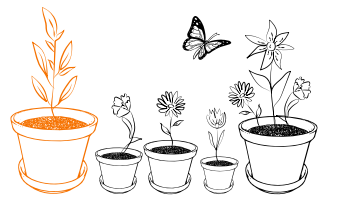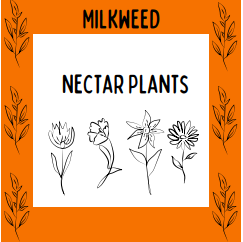
Monarch 911 Project
Monarch 911 is a project led by the Hancock County Master Gardeners. Our goal is to make Hancock County, Indiana a preferred destination of the Monarch butterfly.
There are just a few ways that we are working to meet our goal:
- Encouraging others to plant Monarch gardens by distributing milkweed and nectar plant seeds to the public
- Educating the community on the importance of Monarchs as pollinators
- Establishing a “Monarch Waystation” at the Purdue Extension office in Greenfield (972 E Park Ave, Greenfield, IN 46140)
Why a Monarch garden?
Monarch butterflies migrate across the continent, providing the invaluable service of pollinating flowers. Thanks to monarchs and other pollinators, we can enjoy an abundance of flowers, fruits, and vegetables.
Unfortunately, the loss of monarch habitats has greatly reduced their numbers. We have the privilege and responsibility to restore these habitats in Hancock County. We can do this by planting gardens where monarch butterflies can hatch and live safely.

What to plant?
Milkweed
Did you know Monarch Butterflies lay eggs on only one kind of plant? Without milkweed in a garden, there will be no Monarch caterpillars!
There are many types of milkweed, but these are native to our area of the country:
- Common milkweed
- Swamp milkweed
- Butterfly milkweed
- Poke milkweed

Nectar Plants
Monarch larvae eat only milkweed, but adults enjoy nectar from many kinds of plants. They need nectar through the spring, summer, and
fall, so try to choose a variety of plants that bloom throughout the growing season.
Here are a few ideas of plants they will love:
- Spring Beauty (early)
- Purple prairie clover (early)
- Leadplant (early)
- Coneflowers (mid)
- Liatris (mid)
- Bee Balm (mid)
- Black-eyed Susan (mid)
- New England Aster (late)
- Blue mistflower (late)
- Stiff or Showy Goldenrod (late)

Planting Tips
Container Garden:
Anyone can provide a home for monarchs, no matter how much space is available! Remember to provide adequate drainage and use potting soil when gardening in containers.
Start with one or two large pots (16-20″) containing one milkweed plant each. If you’re starting with seeds, use several seeds per pot.
Add any number of pots with nectar plants nearby. These don’t have to be directly next to the milkweed, but should be easily visible, so the butterflies know where to go.

Traditional Garden:

- Monarchs can’t use milkweed it they don’t know it’s there! Plant milkweed in a perimeter around your garden, so they can see it easily.
- Plant your monarch garden in an area that won’t be affected by pesticides.
- If you’re planting common milkweed, be sure the plants have room to spread.
Growing Milkweed from Seed
Starting Seeds
Fall is the best time to plant milkweed seeds because it mimics nature’s timing.
- Scatter seeds on the soil surface 1/4-1/2 inch apart.
- Cover with about 1/4 inch of additional soil.
- Water the area until plants become established.
If you missed out on fall planting, there’s still time. You’ll just have an extra step to ensure your seeds grow well. This step is called “cold stratification”.
- Place your Milkweed seeds in a damp paper towel inside a sealable plastic bag (Ziploc).
- Label your seeds.
- Place sealable plastic bag in your fridge for 3-6 weeks.
- Plant the seeds as indicated above.
Master Gardener Tips
- Milkweed doesn’t like to be transplanted, so it’s best to start the seeds in the same place where you want them to grow permanently.
- If you must start your seeds indoors, use peat pots. Plants growing in peat pots can be planted without being removed from the pot, which reduces transplanting stress.
- Milkweed seeds have a low germination rate, so plant 3-4 in each hole or pot
Additional Resources
Excited about creating safe homes for Monarch Butterflies? These are our favorite resources:
Monarch 911: https://hancockmga.com/monarch911
The Monarch Joint Venture: https://www.monarchjointventure.org
Monarch Nectar Guides: https://xerces.org/monarchs/monarch-nectar-plant-guides
Monarch Waystation Program: https://www.monarchwatch.org/waystations
Monarch Butterfly Conservation: https://www.xerces.org/monarchs
Gardening for Wildlife: https://www.nwf.org/Garden-for-Wildlife/Wildlife/Attracting-Butterflies